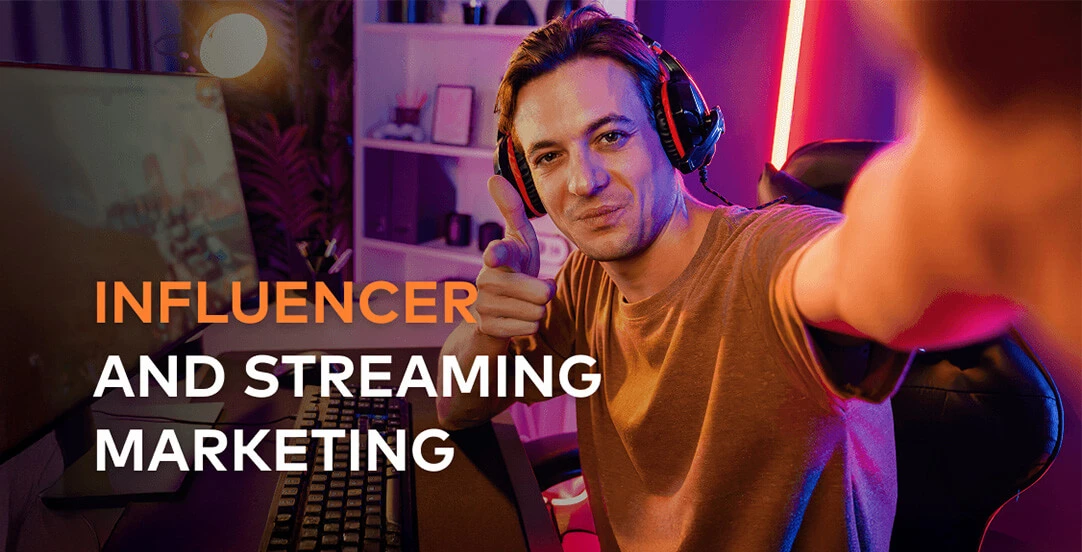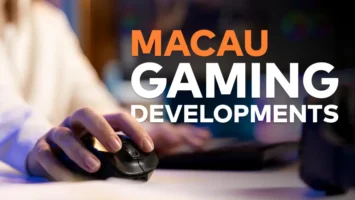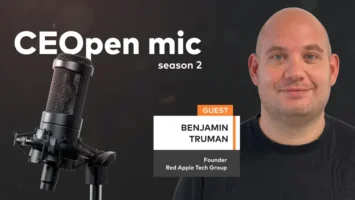Influencer and streaming marketing in the iGaming industry

As the iGaming industry continues to expand globally, competition grows fiercer and user acquisition costs rise. In this saturated digital ecosystem, influencer and streaming marketing are emerging as key tools for brand differentiation and user engagement. By leveraging the personal connection between content creators and their audiences, iGaming brands are finding more authentic, effective ways to reach potential players. Heading into 2025, this strategy is no longer just a trend – it’s a necessity.
Influencer credibility drives user trust
One of the greatest challenges in iGaming marketing is building trust. Gambling inherently involves risk, and users are more likely to trust recommendations from people they follow than from banner ads or email campaigns. This is where influencer marketing excels.
In 2025, influencer partnerships in iGaming will lean heavily on micro-influencers and niche creators. These individuals may not have millions of followers, but they often achieve far higher engagement and conversion rates. Their communities are loyal and responsive, especially when the influencer is a genuine player rather than a promotional mouthpiece.
To maximize ROI, iGaming operators are increasingly forming long-term partnerships with streamers rather than one-off campaigns. This enables consistent messaging, deeper audience education, and stronger brand alignment.
The rise of streaming as a performance channel
Live streaming has become one of the most influential content formats across entertainment, gaming, and social media. Platforms like Twitch, Kick, and YouTube Live have created massive audiences hungry for interactive content, and iGaming brands have taken notice.
Casino streamers broadcast their gameplay in real time, showcasing slots, roulette, blackjack, or sports betting. These streams are not just entertainment, they are powerful brand vehicles. Operators that collaborate with streamers can tap into ready-made audiences, gain visibility, and drive conversions through affiliate codes and exclusive bonuses.
iGaming’s natural fit with live content
Few sectors align with the logic of streaming as well as iGaming. From live casino games and slots to esports betting and poker tournaments, the industry already thrives on real-time engagement and audience participation. Streaming takes that logic a step further, turning passive audiences into active participants.
For example, casino streamers often play with their own money or via sponsored balances while engaging their viewers in chat, giveaways, and bonus codes. This creates a hybrid entertainment model, blending influencer culture with direct promotion and real gameplay. It also provides a level of transparency and trust rarely seen in traditional digital advertising.
Regulatory challenges and grey zones
Despite its advantages, streaming & influencer marketing in iGaming faces serious scrutiny. Many countries have introduced or are planning stricter advertising laws, particularly targeting influencer content and the promotion of gambling to minors. Twitch’s ban on unlicensed casino streams in 2022 was a watershed moment, forcing the industry to adapt.
In 2025, regulatory compliance is not optional. Operators must carefully vet their streaming partners, ensure licenses are clearly communicated, and avoid any promotional content that crosses ethical or legal lines. This includes greater transparency in paid partnerships and clear warnings about the risks of gambling.
Platform diversification and the rise of Kick
While Twitch remains the most recognizable name in live streaming, its stricter policies have opened the door for platform diversification. Kick, backed by crypto-casino interests, has quickly become the platform of choice for many casino streamers. Its looser moderation rules, generous revenue splits, and iGaming-friendly stance have made it a key player in 2025.
However, relying solely on Kick presents risks, particularly if regulators or payment processors decide to intervene. A smart streaming strategy in iGaming now includes multi-platform distribution, with presence across Twitch, Kick, YouTube Live, and even TikTok Live for certain markets.
Data-driven influence – Metrics that matter
With more budget flowing into streamer sponsorships, the need for robust performance tracking is growing. Gone are the days when view counts and chat activity were enough. In 2025, operators are investing in:
- attribution models that link streamer campaigns to actual deposits or lifetime value,
- engagement metrics such as watch time per user, click-through rates on affiliate links, and retention from first to second session,
- CRM integration, enabling real-time feedback loops between stream performance and user behavior on the platform
The ability to connect streaming efforts with ROI will define the success of future campaigns.
Influencer partnerships – More than just reach
The best-performing campaigns in 2025 aren’t about hiring the biggest streamer, they’re about finding the right fit. Niche creators with strong communities often outperform mega influencers in terms of conversion. Audiences are increasingly savvy, and they value authenticity above all.
Successful iGaming partnerships now focus on:
- long-term relationships instead of one-off promotions,
- co-created content, such as streamer-branded tournaments or exclusive bonuses,
- responsible gambling messaging, integrated into the stream itself.
By aligning brand values with creator identity, operators can build lasting trust, which is increasingly rare in the digital marketing space.
Challenges ahead: Reputation, saturation, and scalability
While streaming marketing continues to deliver strong returns, it also presents growing challenges:
- reputation risk – association with irresponsible streamers can damage brand credibility,
- market saturation – as more brands flood streaming platforms, standing out becomes harder,
- scalability – unlike programmatic ads, influencer campaigns require manual negotiation, content oversight, and ongoing relationship management.
To address these, leading operators are investing in streaming agencies, creator marketplaces, and internal influencer teams to professionalize their approach.
Strategic outlook for 2025 and beyond
Looking ahead, streaming & influencer marketing in the iGaming industry will continue to evolve. The most successful strategies will blend data-driven performance models with creative content partnerships and regulatory discipline. Expect to see:
- greater integration of AI tools for streamer discovery, content moderation, and campaign analytics,
- growth of live shopping-style formats, where players can instantly engage with offers featured on-stream,
- increased interest in micro-influencers who deliver better ROI than top-tier ones,
- expansion into emerging markets, where mobile streaming is rapidly gaining ground.
Ultimately, streaming or influencer marketing is no longer a fringe tactic. It’s a strategic pillar of modern iGaming marketing, and its influence will only grow in the next years.





















